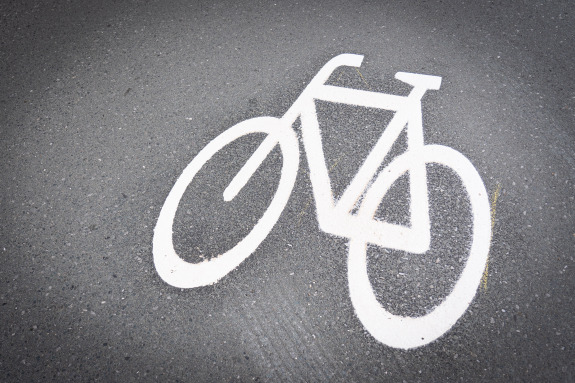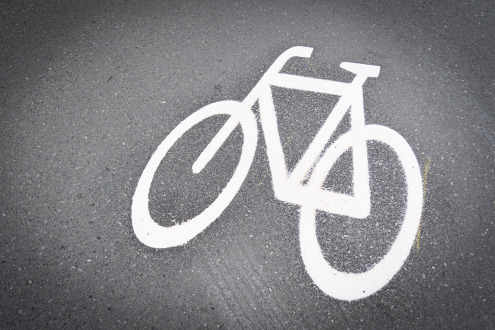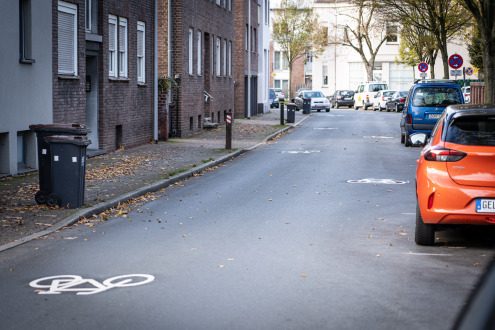Pictogram chains
What exactly are pictogram chains?
Bicycle pictogram chains are a "stringing together" of individual bicycle pictograms at intervals of about 20 to 40 m on the carriageway (at the edge of the carriageway).
Prerequisites for the marking of bicycle pictogram chains:
- Main road with important cycling connection function
- No alternative cycling infrastructure (e.g. raised cycle lane, cycle lane, cycle protection lane) available or possible.
- High use of side space by cyclists
Bicycle pictogram chains serve exclusively to raise the awareness of all road users!
However, they have no significance in terms of traffic law!
At the same time as the bicycle pictogram chains, the order of stationary traffic on the carriageway ("parking only in marked areas") is carried out in the relevant road sections, if necessary.
Why bicycle pictogram chains?
In addition to the consistent promotion of cycling, the city administration's primary goal is to make cycling on Bocholt's roads as safe as possible ("Vision Zero"). This goal also applies in particular to the main roads (so-called reserved network, speed: 50 km/h).
In order to ensure this, cycling traffic, if possible in the urban area, is guided on so-called "high kerb cycle paths" in the side space, on cycle lanes on the carriageway (demarcated by a continuous wide line marking) or on cycle protection lanes on the carriageway (demarcated by an interrupted narrow line marking).
However, in a grown city like Bocholt - with diverse demands on the road space - there are not sufficient cross-sectional widths available on every main road to construct or arrange these cycling facilities.
As a result, cyclists on main roads have to share the available space with motor vehicles on the carriageway, as the road space is unfortunately insufficient for separate guidance and no alternative, parallel routes are available.
Common misunderstandings
Furthermore, it is often the case that there is a cycle lane in the side space of these roads that is not (or no longer) compulsory for use, or that the existing, relatively narrow pavement has been opened up for cyclists.
This can lead to the following possible conflict situations:
- Motorvehicle driver/cyclist on the carriageway: Motor vehicle driver thinks cyclist must use the "cycle lane".
- Cyclist/pedestrian in the side space: Cyclist thinks he is not allowed on the roadway, pedestrian thinks cyclist must be on the roadway.
On such stretches of road, motorists may not expect cyclists to be on the road, which can lead to certain acceptance problems.
In addition, cyclists themselves often use the side spaces or (cleared) footpaths that are subjectively perceived as safer, as they consider the use of the carriageway unsafe or, like motorists, are not aware of differences in the obligation to use the carriageway.
In addition to conflicts on the road, this also leads to conflicts with pedestrians in the side space.
Therefore, bicycle pictogram chains are often used in connection with the abolition of the obligation to use cycle paths or implemented in road spaces in which bicycle traffic facilities that comply with the rules cannot be arranged due to insufficient road widths.






